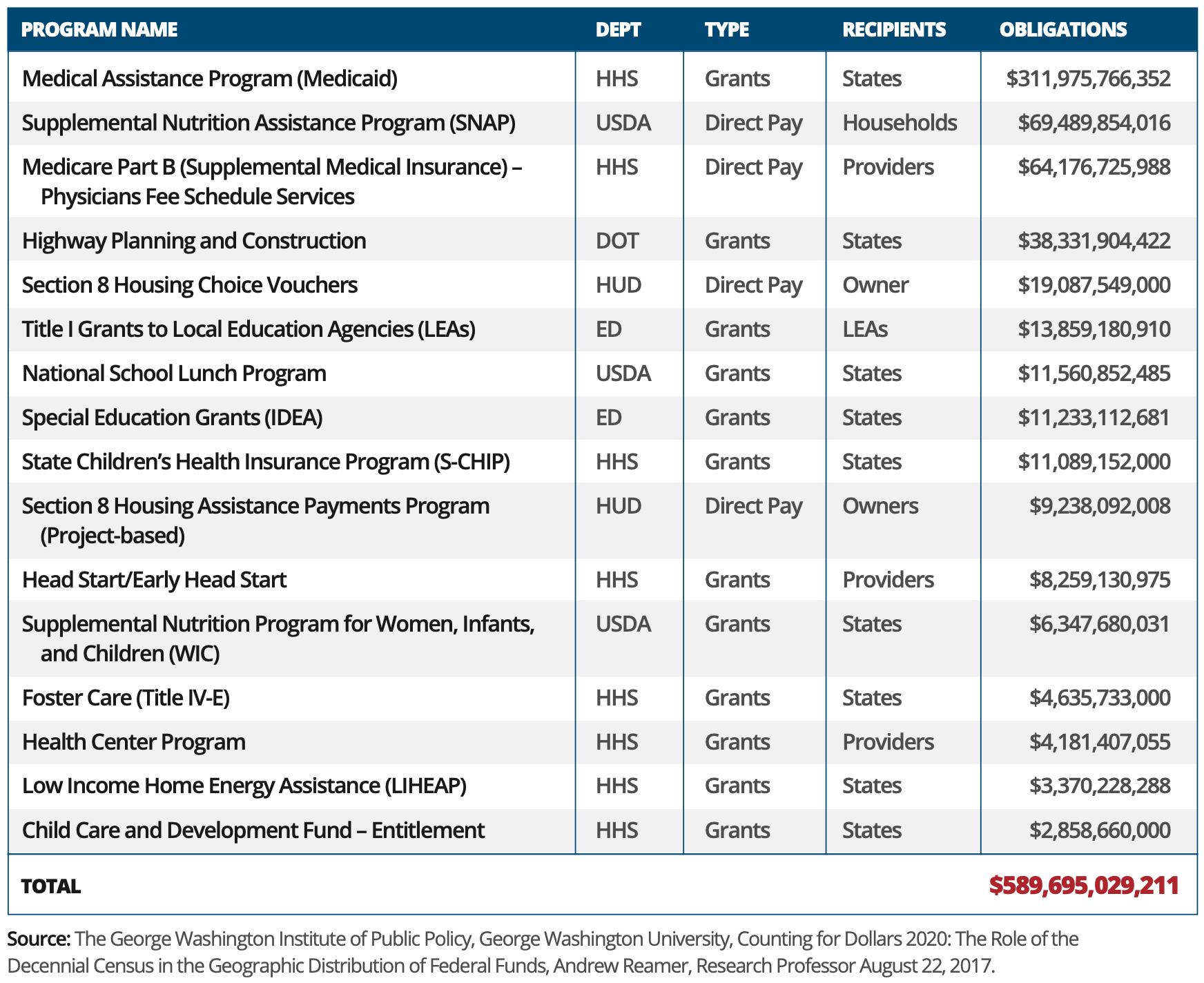WHY THE CENSUS MATTERS
The decennial census most effectively represents and facilitates proper federal funding to everyone, based on an accurate count of the population. When communities are not counted, their numbers are not included in annual federal funding allocations for the entire decade! Similarly, this country’s “representative” form of government (apportionment), and redistricting are unequivocally tied to the Census count.
The Census is a once in a decade call to action, a national civic engagement movement requiring the participation and active commitment of every household, neighborhood and community. It is the backbone of virtually every data product researchers, governments, and businesses use to understand who we are, how we’ve changed, and what this might mean for the future. It is also the most democratic and inclusive activity we do as a country. This once-a-decade count is the only source of basic demographic data on all individuals living in the United States. All of us (community organizations, elected officials, the Census Bureau and the public at large) must work together to ensure our communities get their fair share of funding and representation.
Political Power and Representation
 Political boundaries are drawn using Census data. Data from the United States Census is at the very heart of American representative democracy, and has been ever since the Census was ratified as part of the U.S. Constitution in 1788. Population data from the Census is used to apportion political representation at all levels of government including:
Political boundaries are drawn using Census data. Data from the United States Census is at the very heart of American representative democracy, and has been ever since the Census was ratified as part of the U.S. Constitution in 1788. Population data from the Census is used to apportion political representation at all levels of government including:
Federal House of Representatives
Census population counts are used to determine how many of the 435 seats in the U.S. House each state receives. Once determined, states draw their own district boundaries using Census data. Based on the data collected, some states may lose a Congressional seat, and others may gain a seat. In 2010, for instance, the state of Massachusetts lost a congressional seat (from 10 seats to 9), while Florida gained two (25 to 27).
State Legislatures
Seats are drawn for state legislative and Senatorial districts using Census data.
Local Government
Cities and towns use Census data to draw internal political boundaries (i.e., wards and districts).
Census Derived Federal Funding Allocations
 The federal government uses Census data to distribute funding to meet local needs. The richness of Census data allows the federal government to distribute funding for some of the country’s most critical social programs directly toward those people with greatest need. The National League of Cities breaks down these federal allocations into three categories:
The federal government uses Census data to distribute funding to meet local needs. The richness of Census data allows the federal government to distribute funding for some of the country’s most critical social programs directly toward those people with greatest need. The National League of Cities breaks down these federal allocations into three categories:
Formula Grants
Formula grants are allocated to states in accordance with formulas that typically target greater funding to areas or populations with greater need. The largest example of this type is Medicaid, which provides health insurance coverage to low-income families and individuals.
Project Grants
Unlike formula grants, project grants fund specific projects for fixed periods of time. These can include anything from scholarship funding to construction grants. The Head Start/Early Head Start programs are examples of this type of grant.
Direct Payments for Specified Use
Direct payments are made to individuals, private firms or institutions for a particular activity or in support of a particular program. The Supplemental Nutrition Assistance Program (colloquially known as SNAP or “food stamps”) is one such program.
In 2015, The George Washington Institute of Public Policy identified and analyzed 16 large federal programs with distributions guided in whole or part by data derived from the Decennial Census. Findings from this analysis follow. The Institute concluded, “Equitable distribution of federal financial assistance to state and local governments and to households will depend on the accuracy of the 2020 Census.”
Sixteen Large Federal Assistance Programs that Distribute Funds on Basis of Decennial Census-derived Data, FY2015



